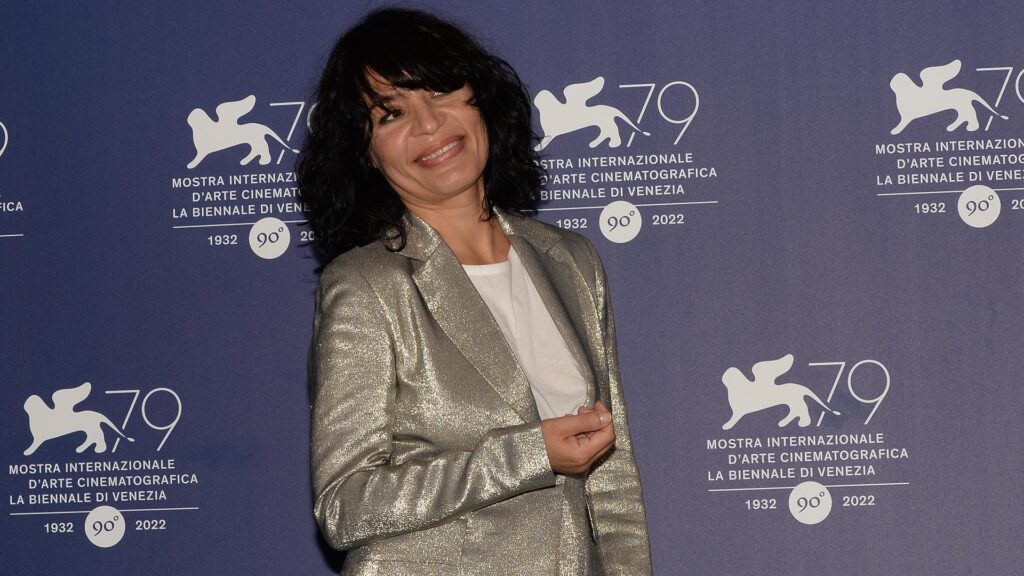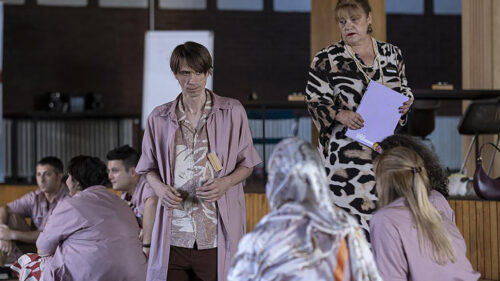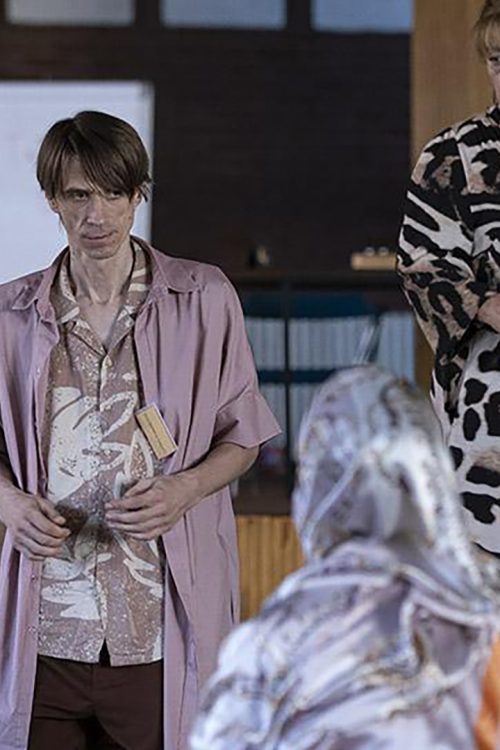
Born in Skopje, North Macedonia, in 1974, Teona Strugar Mitevska is a director and scenographer. Her debut came in 2001 with short movie Veta, who earned the Jury Special Prize at the Berlinale. Her God Exists, Her Name Is Petrunya (2019) won the LUX Award for its “significant contribution to the feminist struggle against conservative societies”. In Orizzonti Mitevska presents The Happiest Man in the World, which speaks of love, freedom and pain through the story of Asja and Zoran.
The devastation that a war leaves behind causes indelible scars in people and things. It seems that the film follows three different levels of pain and grief processing: of the single individual (Asja / Zoran), of a community (the group of people of different origins and ages gathered in the hotel), of a city (Sarajevo)…
Beautifully said. The film is indeed a love–freedom–pain triptych. The characters in the film are like frescoes floating in that very triptych. Freedom to be, freedom to live, freedom to choose, that is all we strive for. Only those who have experienced unfreedom know the real meaning of it. Freedom is about liberation, liberating one’s self from the past, in the case of our film, that would be history, to be free. Collective history is about collective remembrance of pain. I grew up in Yugoslavia, my mother is Montenegrin, my father Macedonian. With the disappearance of Yugoslavia, the disappearance of what was promised to me and my generation as we were growing up, the war took all. Making this film is, in a way, a personal journey to understand. And postmodern Sarajevo is the ultimate symbol of the beauty that once was, the beauty that belongs to us all. In the end, the film is an ensemble film, filled with testimonials of trauma suffered, but then these individual testimonials become part of a something new, a new history and a future built over death because in this story, death is the beginning of life, they transcend the specific historical-political narrative from the screenwriter and director’s, but also the actor’s perspective, and rise to the level of individual identities, who elevate their marginalized stories to a familiar/close wound, struggle, tear, hope for everyone
The way the characters interact with each other suggests a choreography with Asja and Zoran’s at the centre. Furthermore, Asja’s solitary dance marks a fundamental turning point in the story. What does dance and theatre represent to you?
When I started preparing the film I soon realized that organizing, controlling, and further making something of importance with 40 characters in a room is a challenge. So we rehearsed for six weeks and then we shot. I instructed the actors not to look for the camera, the camera will look for them, which meant everyone performed at all times. I wanted to give the effect of urgency, a feeling the story required. I must also add, nothing is improvisation, everything was carefully crafted. Lars von Trier says: Husk of sjusk! or, remember to be imperfect. We embraced imperfection. Mise-en-scène is a dance – nothing more, nothing less.

When they meet at a speed date event in Sarajevo, Asja and Zoran don’t seem to be looking for the same thing. She is a single woman in her forties looking for love, while Zoran is a banker who is looking for redemption after an episode he was involved in 1993, during the war...

When they meet at a speed date event in Sarajevo, Asja and Zoran don’t seem to be looking for the same thing. She is a single woman in her forties looking for love, while Zoran is a banker who is looking for redemption after ...
The action takes place in a hotel with a strong 1980s connotation. Why this choice?
The Balkan War took away from all of us everything that we were promised while growing up in Yugoslavia, and yes, today almost all of us are nostalgic of what once was. Brutalist architectural style is part of this memory, it is an architecture that I cherish dearly, emotionally and aesthetically. Putting the story in such a time capsule is a part of this nostalgia. All my films are shot in spaces of this period, an art theorist friend of mine told me once: if one wants to trace Brutalist architecture of Macedonia, all they have to do is watch my films. And of course one does not make choices for purely aesthetic reasons, brutalism is amazing, and its coldness serves the story well.
The film is inspired by the personal story of Elma Tataragic, co-writer of the film. How did your collaboration come about and what are your next projects together?
Elma was injured during the siege of Sarajevo. And then, after the war, when she studied cinema at the Sarajevo Academy, she was invited to an acting workshop where she met the man. They were asked to talk about the worst things that happened to them. And they share their experiences just as in the film. Their meeting was pure chance. She stayed in contact with this man while having very conflictual feelings about the whole experience. Eight years ago, Elma told me she would like to do something with her story it. But what? A historical film? Who cares about historical films anymore? And then, three years ago, I was at the Sarajevo Film Festival with my sister Labina. We were at the famous Holiday Inn hotel, this big yellow building, a pivotal place during the siege of Sarajevo. We were sitting in the hallway, and I told her Elma’s story. Labina said: “Imagine if we set this story here and we find a way to give it a more contemporary view.” We called Elma who answered: “Great! When do we start writing?”.
We are currently in pre-production of our next film together: Mother.
Tell us four things about yourself, one of which is a lie…
I hate planes, I love fluidity, my son’s name is Kaeliok Fonenimum Varka, I run every day.
No results found.